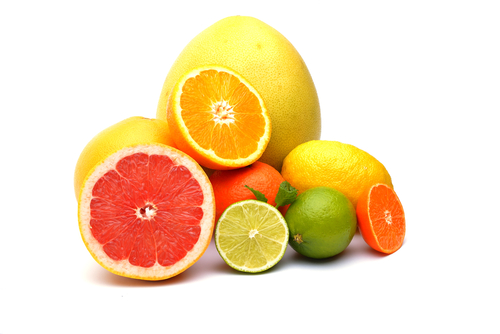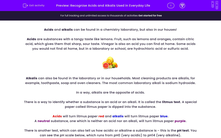Acids and alkalis can be found in a chemistry laboratory, but also in our houses!
Acids are substances with a tangy taste like lemons. Fruit, such as lemons and oranges, contain citric acid, which gives them that sharp, sour taste. Vinegar is also an acid you can find at home. Some acids you would not find at home, but in a laboratory or school, are hydrochloric acid or sulfuric acid.

Alkalis can also be found in the laboratory or in our households. Most cleaning products are alkalis, for example, toothpaste, soap and oven cleaners. The most common laboratory alkali is sodium hydroxide.
In a way, alkalis are the opposite of acids.
There is a way to identify whether a substance is an acid or an alkali. It is called the litmus test. A special paper called litmus paper is dipped into the substance.
Acids will turn litmus paper red and alkalis will turn litmus paper blue.
A neutral substance, one which is neither an acid nor an alkali, will turn litmus paper purple.
There is another test, which can also tell us how acidic or alkaline a substance is - this is the pH test. You can see the pH scale below, which runs from pH0 (very acidic) to pH14 (very alkaline).

There is a special solution called Universal Indicator solution. When a few drops of Universal Indicator are added to a substance, it turns a different colour. This colour matches one of the colours on the Universal Indicator scale above and that's how you determine how acidic or alkaline a substance is and so what its pH is.
Let's have a go at some questions now.








